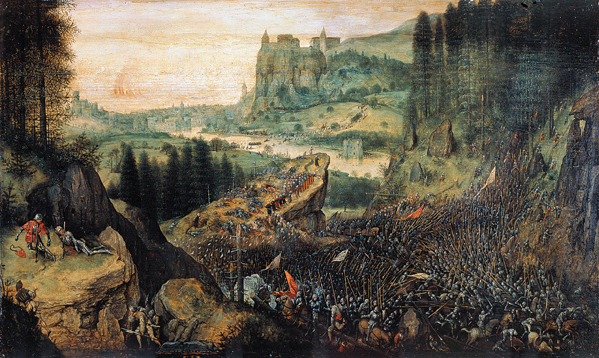Image Details

Art Resource/Kunsthistorisches Vienna, Austria
The curtain falls. Saul and his sons meet their end on Mt. Gilboa while mighty armies are arrayed in battle around them in this 16th-century painting by Dutch artist Pieter Brueghel the Elder. At bottom left, men from the town of Jabesh-Gilead risk their lives to retrieve the fallen king’s body for burial (although in the Bible the bodies of Saul and his sons are first hung on the walls of Beth-Shean and then retrieved by the men of Jabesh-Gilead [1 Samuel 31:11–13]).
According to author White, the story of Saul’s burial, which is recorded in the History of David’s Rise, suggests that Saul was a historical figure because it fits well with an episode (scene 6) in the History of Saul’s Rise. In that episode, Saul musters an army and rescues the men of Jabesh-Gilead from a siege; as a result, the Israelite army hails Saul as their king. Saul’s heroic actions on behalf of the men of Jabesh-Gilead would explain their later act of heroism to ensure his proper burial. White concludes that Saul likely did save Jabesh-Gilead from destruction and that the episode forms part of the historical core in the Bible’s account of Israel’s first king.
